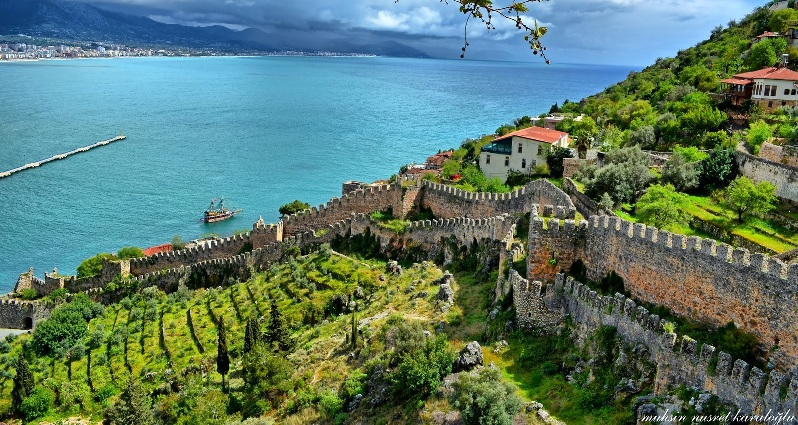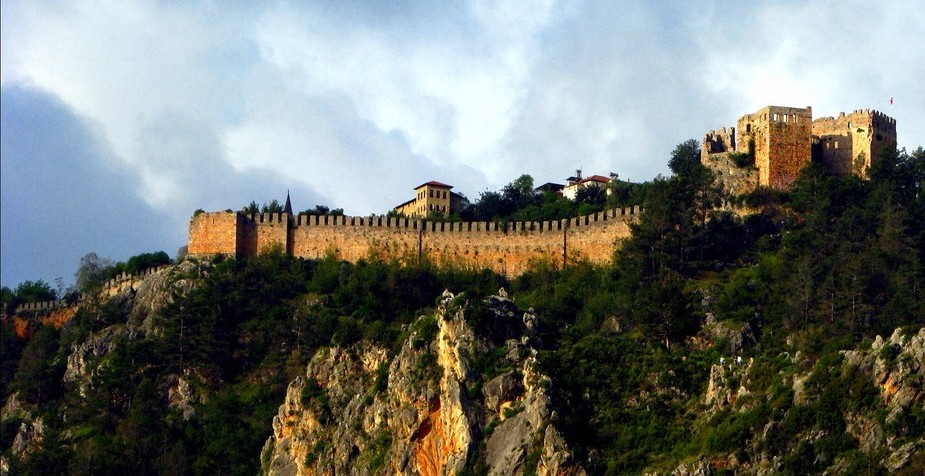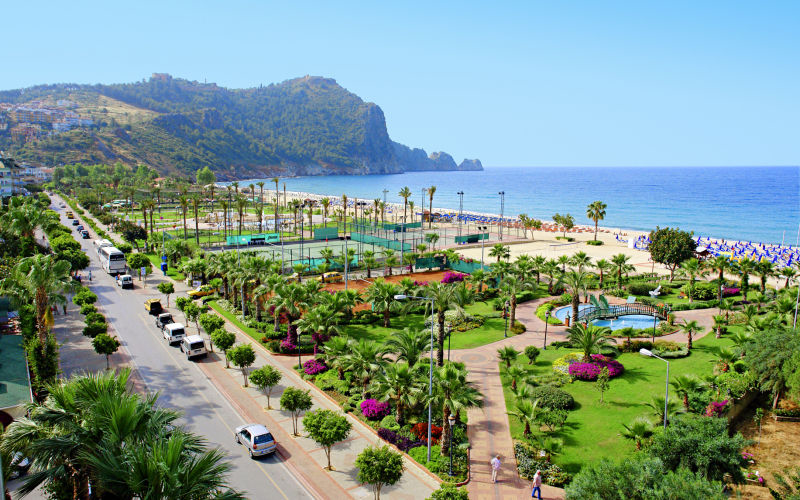Country: Republic of Turkey
Area: Alanya
Coordinates: 36°33′N 32°00′E
Mayor: Adem Murat Yucel
Population: 276.277 people
Time zone: EET (UTC +2), summer EEST (UTC +3)
Area code: +90 242
Postal code: 07400
History

ALANYA, is located on a peninsula which is bordered by the Taurus Mountains in the north and the Mediterranean Sea on the south. This ancient city was named either Pamphylia or Cilicia because of it lies between the two region. There is no definite information about the first founding of Alanya. Prof. Dr. Kılınç Kökten’s researches in1957 in Kadıini Cave which is located 12 km from the centre of the city, shows us the history of the region that goes to late Paleolitic period.
When or who was founded Alanya is unknown. Known in Latin as Coracesium, or in Greek as Korakesion from the Luwian Korakassa meaning “point-protruding city.”Left to Ptolemy I Soter after 323 BC, his dynasty maintained loose control, and it became a popular spot for Mediterranean pirates who were at times loyal Diodotus Tryphon of the Seleucid Kingdom. This period ended with the city’s incorporation into the Roman Empire by Pompey in 65 BC. After the empires collapse and split the city remained under Byzantine influence, becoming known as “Kolonoros,” or beautiful mountain. The area fell from their sphere of influence after the Battle of Manzikert to tribes of Seljuk Turks, only to be returned in 1097 by Alexios I Komnenos and forces of the First Crusade. The Armenian Kingdom of Cilicia periodically held the port, and it was from an Armenian, Kir Fard, that Muslims took lasting control in 1221 when the Anatolian Seljuk Sultan Alaaddin Keykubat exchanged governance of the city of Akşehir for it. The the city was renamed Alaiye, a derivative of Alaaddin. Seljuk rule saw the golden age of the city, and it can be considered the winter capital of their empire. Building projects, including the twin citadel, city walls, arsenal, and Red Tower made it an important port for western Mediterranean trade, particularly with Ayyubid Egypt and the Italian city-states. Keykubat also constructed numerous gardens and pavilions outside the walls, and many of his works can still be found in the city.

The Mongol invasion broke down Seljuk control, and the city fell to a series of beyliks, and even to Lusignans from Cyprus. The city was sold by the Karamanoğlu dynasty in 1427 to the Mamluk dynasty for a period before Fatih Sultan Mehmet in 1471 incorporated it into the growing Ottoman Empire. In 1571 the city was organized into the province of Cyprus, then later under Konya, and in 1868 under Antalya, as it is today. In his 1935 visit, Atatürk finalized the name in the new alphabet as Alanya.

The castle has a castle wall of 6.5 km length, 140 towers, about 400 cisterns, doors with inscriptions and as an open air museum reflects Seljuk art at its best, showing the fascination of Seljuk art. The castle was built by A. Keykubat, the Sultan of Seljuk. The ramparts start from Kızkule, extend down from Ehmedek, İçkale, Adam Atacağı, Cilvarda Burnu, Arap Evliyası Rampart and Esat Rampart and pass through Tophane and Tersane and end at Kızılkule at the starting point. The first construction the castle dates from the Hellenistic Period, but in fact the construction took its fascinating and monumental form during the Seljuk Empire. The altitude of the part called the inner castle and located at the highest place of western corner of the peninsula is about 250 meters. It was surrounded by walls from four sides as it was the centre of administrative and military organisation. Two Seljuk period cisterns made of bricks located in the middle part of the inner castle are still in good condition at present. Main buildings in the inner castle were constructed so as to lean on the castle walls, except for the western part. Sultan Keykubat has been built his palace here…The settlement in the castle continues also today. İn front of wooden and stone made houses, silk and cotton are woven, different figured calabash trees are coloured,otantic food has been served in little gardens. Further, on the road to the castle restaurant and cafes are located on the sea side. The castle road is open to vehicle traffic. You can also walk to it in circa one hour.
Climate

Alanya has a typical hot-summer Mediterranean climate. Located at the Mediterranean Basin, the subtropical high pressure zone ensures that most rain comes during the winter, leaving the summers long, hot, and dry, prompting the Alanya board of Tourism to use the slogan “where the sun smiles”. Storm cells sometimes bring with them fair weather waterspouts when close to the shore. The presence of the Taurus Mountain in close proximity to the sea causes fog, in turn creating visible rainbows many mornings. The height of the mountains creates an interesting effect as snow can often be seen on them even on hot days in the city below. The sea at Alanya has an average temperature of 21.4°C annually, with an average August temperature of 28°C.The hottest months are June and July, and the sea is warm enough for bathing from April through

